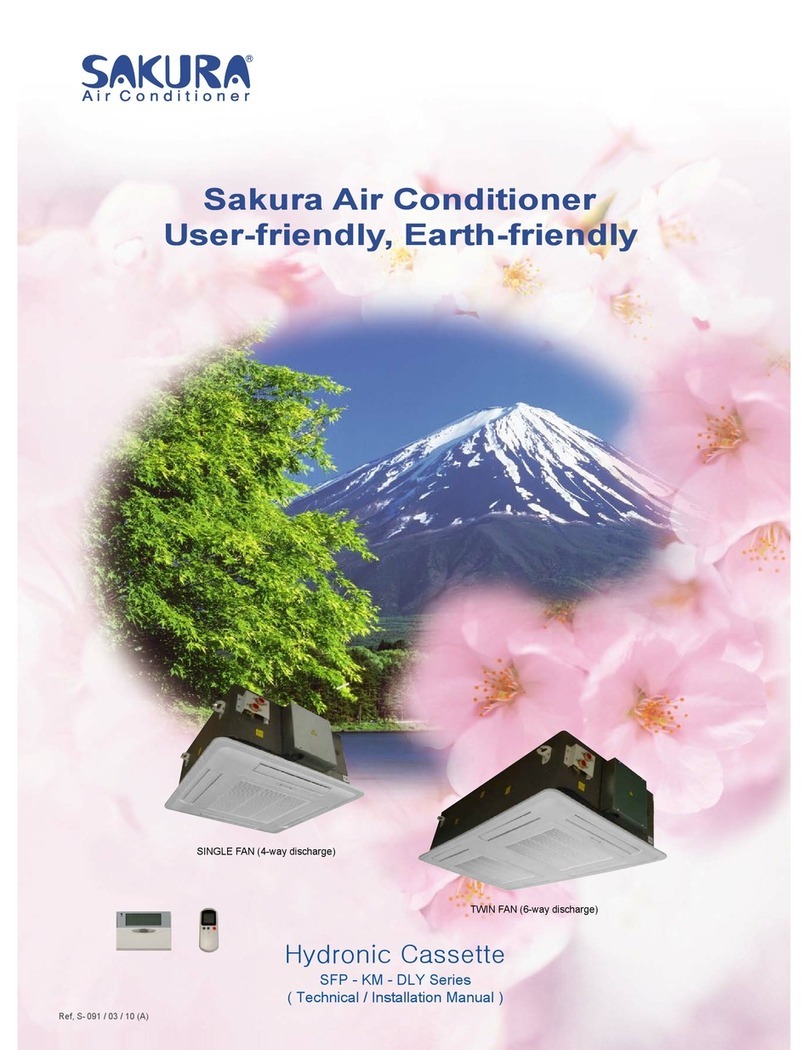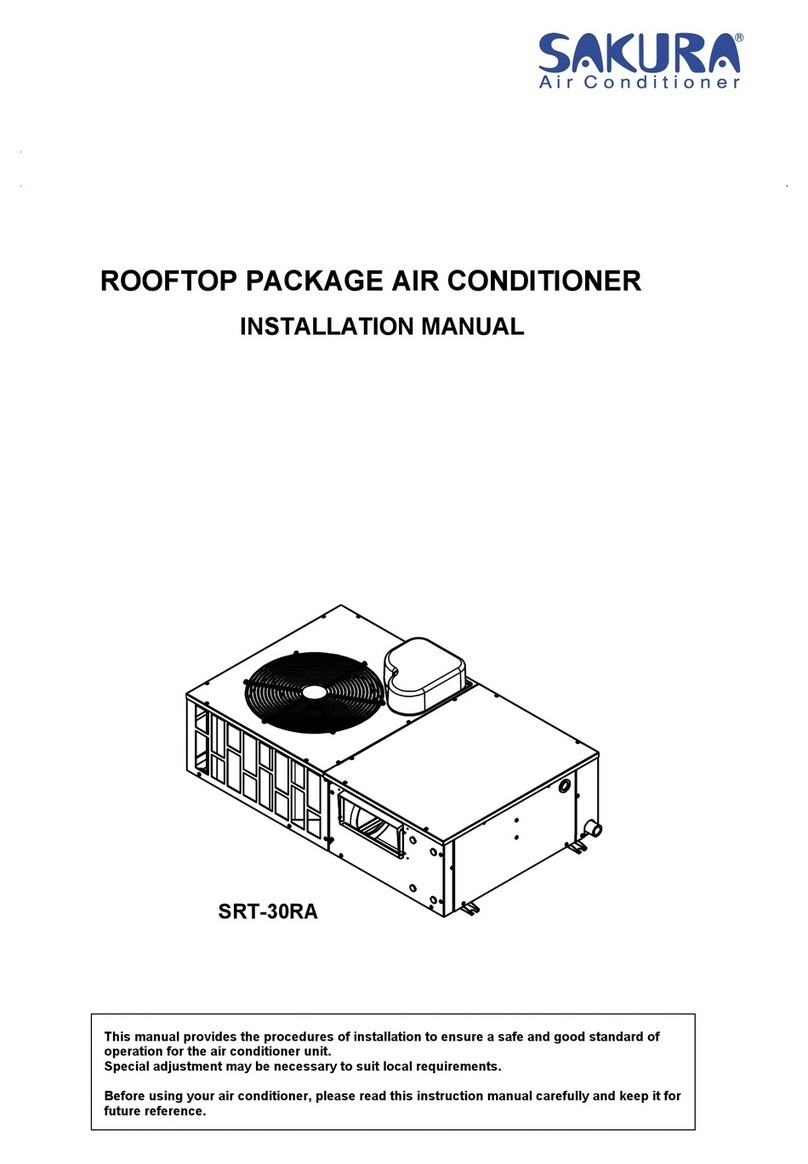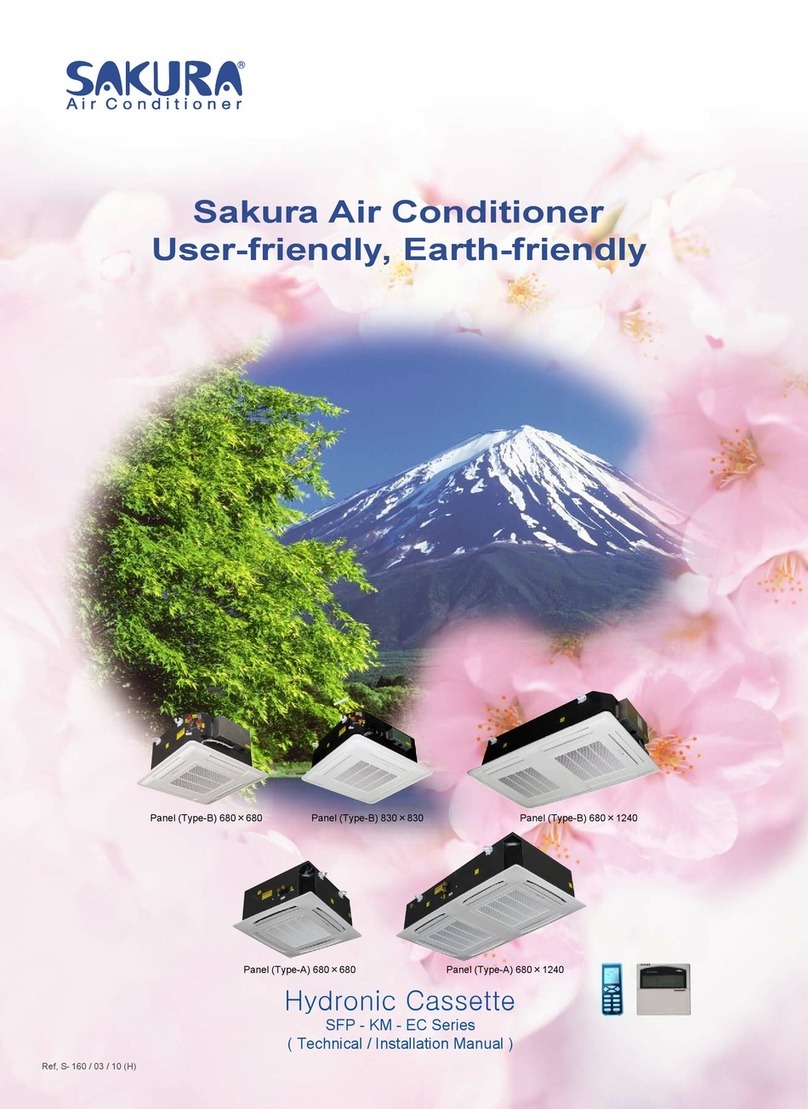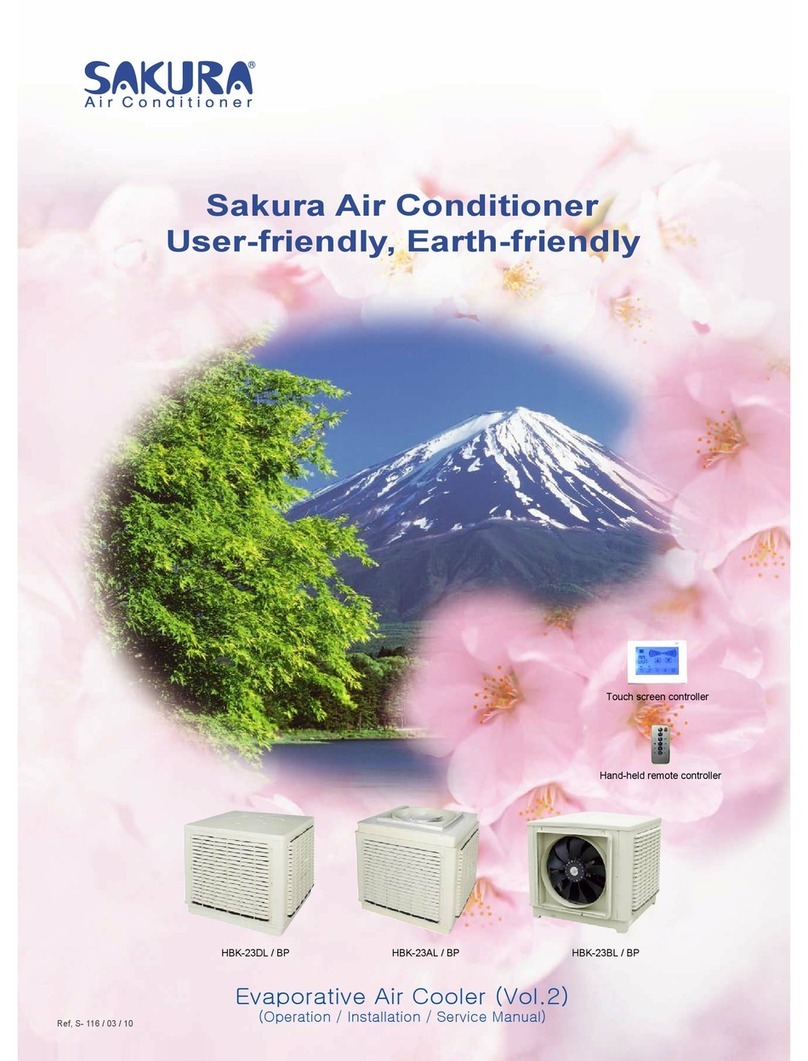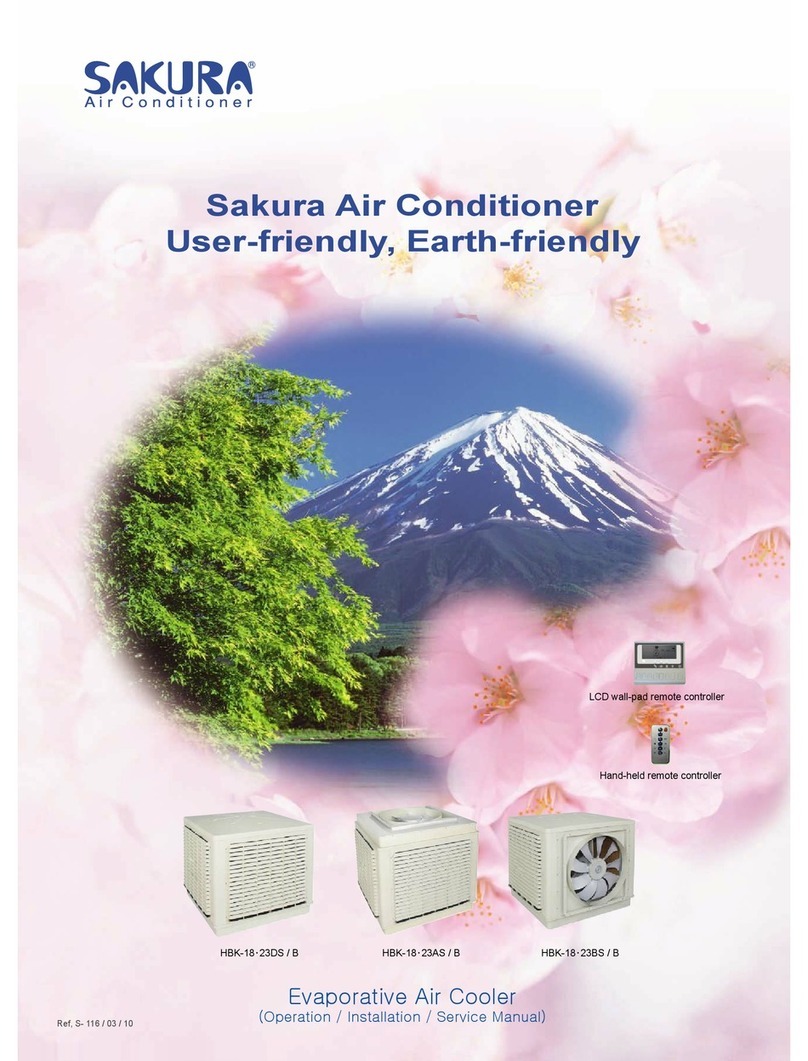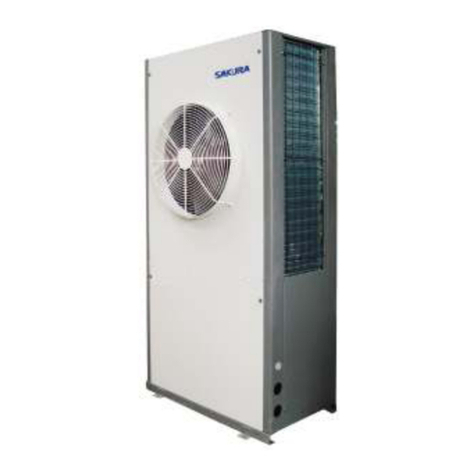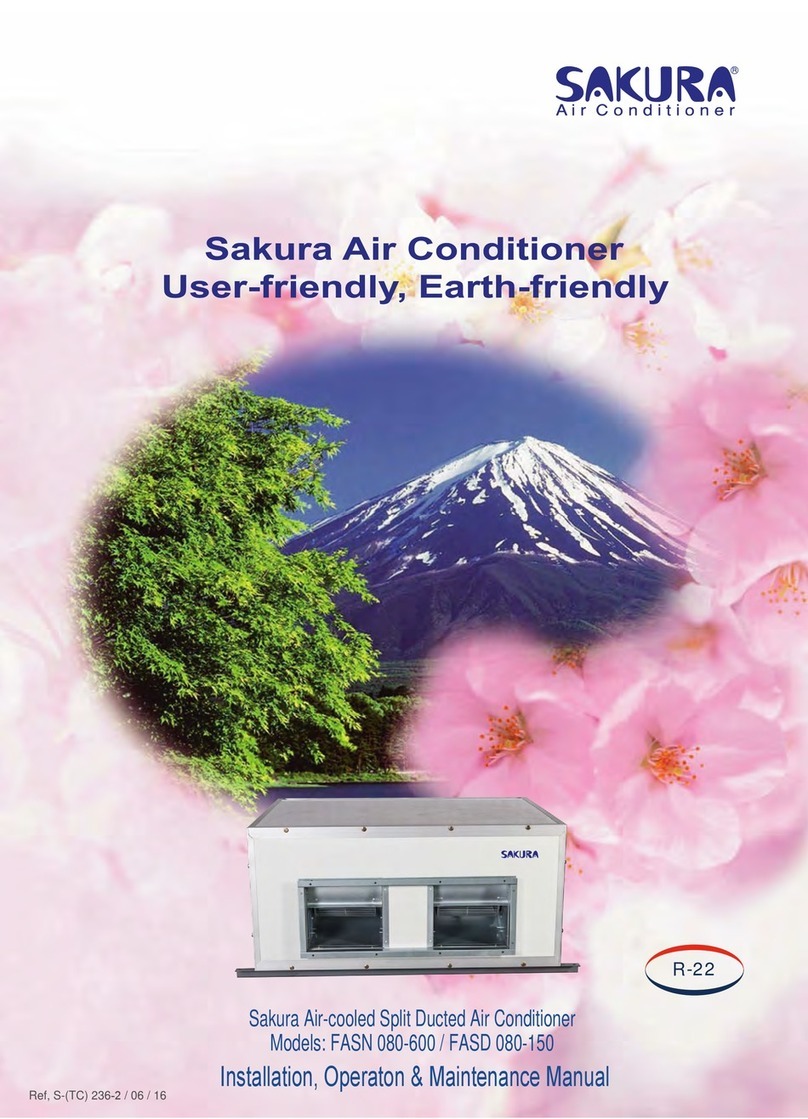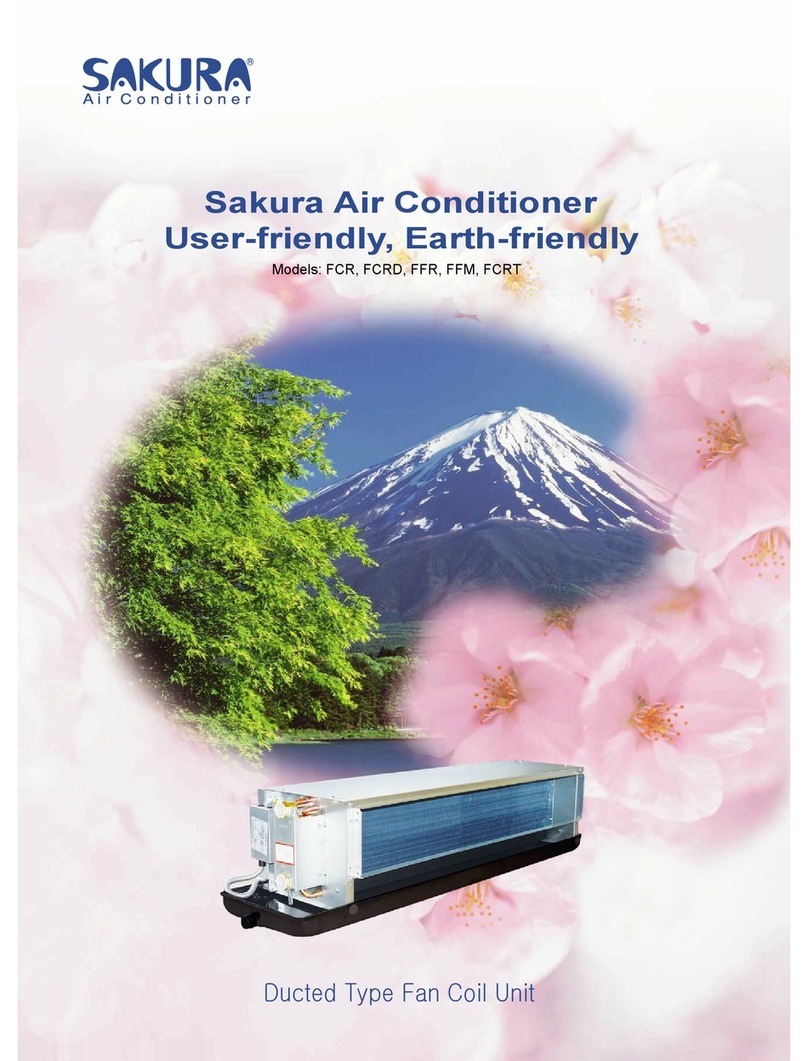1
FEATURES
Electro Galvanized Steel Panels
Corrosion Resistant Cabinet - The weather proof characteristics of the panels have been significantly
reinforced by the adoption of electro galvanized steel panel which have been coated with polyester powder
coated paint to resist corrosion.
Protection System
Compressor Protection - The compressor is protected with high pressure switch, an over current relay,
a crankcase heater, an internal thermostat, a reverse phase protection relay and a cycling protection timer
delay for compressor.
Fan motor - The evaporator fan motor and outdoor fan motor are protected with thermal over current
relay.
Condenser and Evaporator Coil - The coil have seamless Inner groove copper tubing mechanically
bonded to high efficiency. Each coil is factory tested at 400 psig. And easily accessible for service.
SAFETY PRECAUTIONS
Before installing the air conditioner unit, please read the following safety precautions carefully.
Warning
•Installation and maintenance should be preformed by qualified persons who are familiar
with local code and regulation, and experienced with this type of appliance.
•All field wiring must be installed in accordance with the national wiring regulation.
•Ensure that the rated voltage of the unit corresponds to that of the name plate before
commencing wiring work according to the wiring diagram.
•The unit must be GROUNDED to prevent possible hazard due to insulation failure.
•All electrical wiring must not touch the refrigerant piping, compressor or any moving parts
of the fan motors.
•Confirm that the unit has been switched OFF before installing or servicing the unit.
•Do not touch the compressor or refrigerant piping without wearing gloves.
Caution
Please take note of the following important points when installing.
-Do not install the unit where leakage of flammable gas may occur.
If gas leaks and accumulates at the surrounding of the unit, it may cause fire ignition.
-Ensure that the drainage piping is connected properly.
If the drainage piping is not connected properly, it may cause water leakage.
-Do not overcharge the unit.
This unit is factory full charged. Overcharge will cause over-current or damage to the
compressor.
-Ensure that the unit panel is closed after service or installation.
Unsecured panels will cause the unit to operate noisily.
SAKURA - Total Air Conditioning Solution












